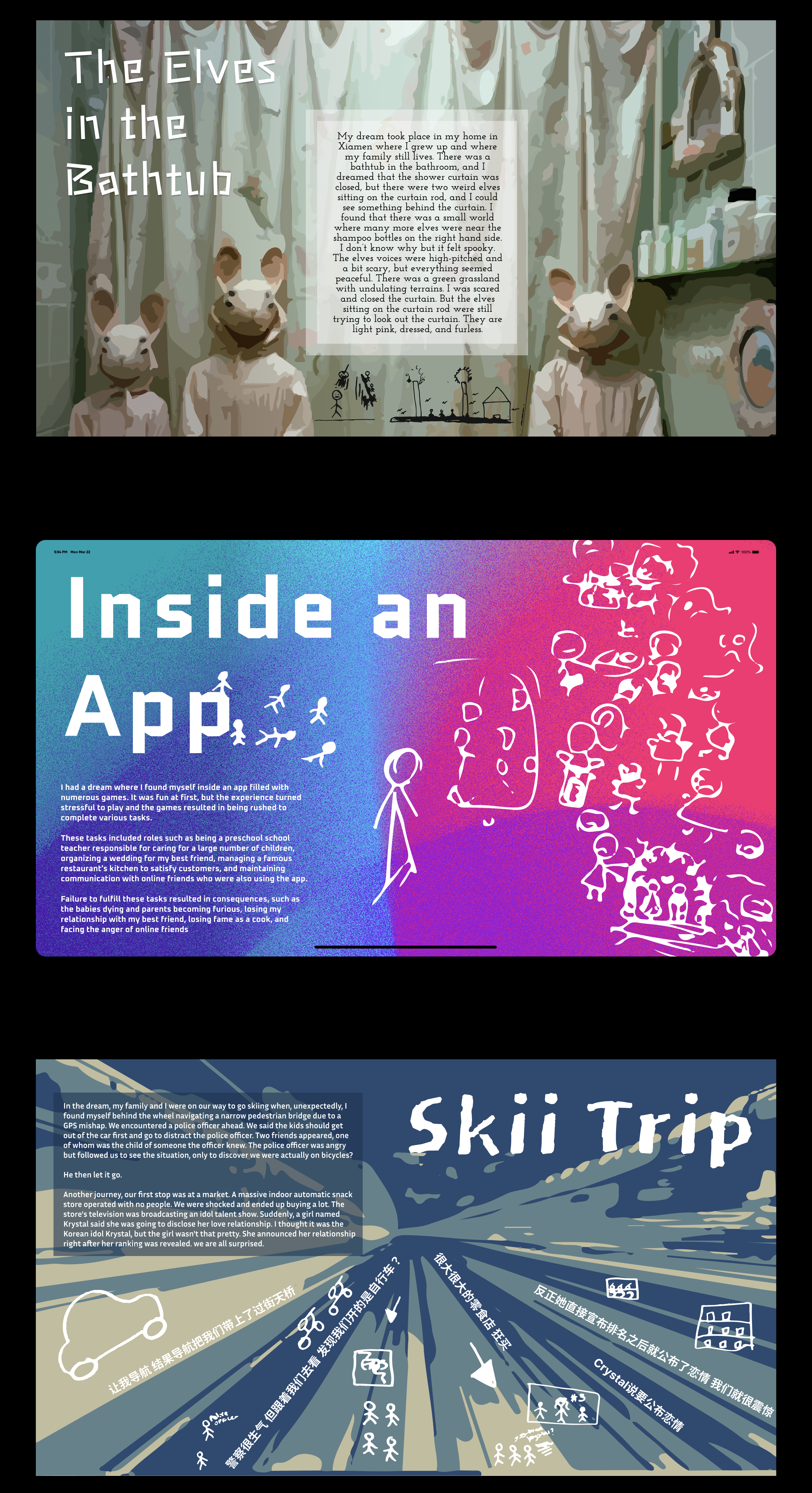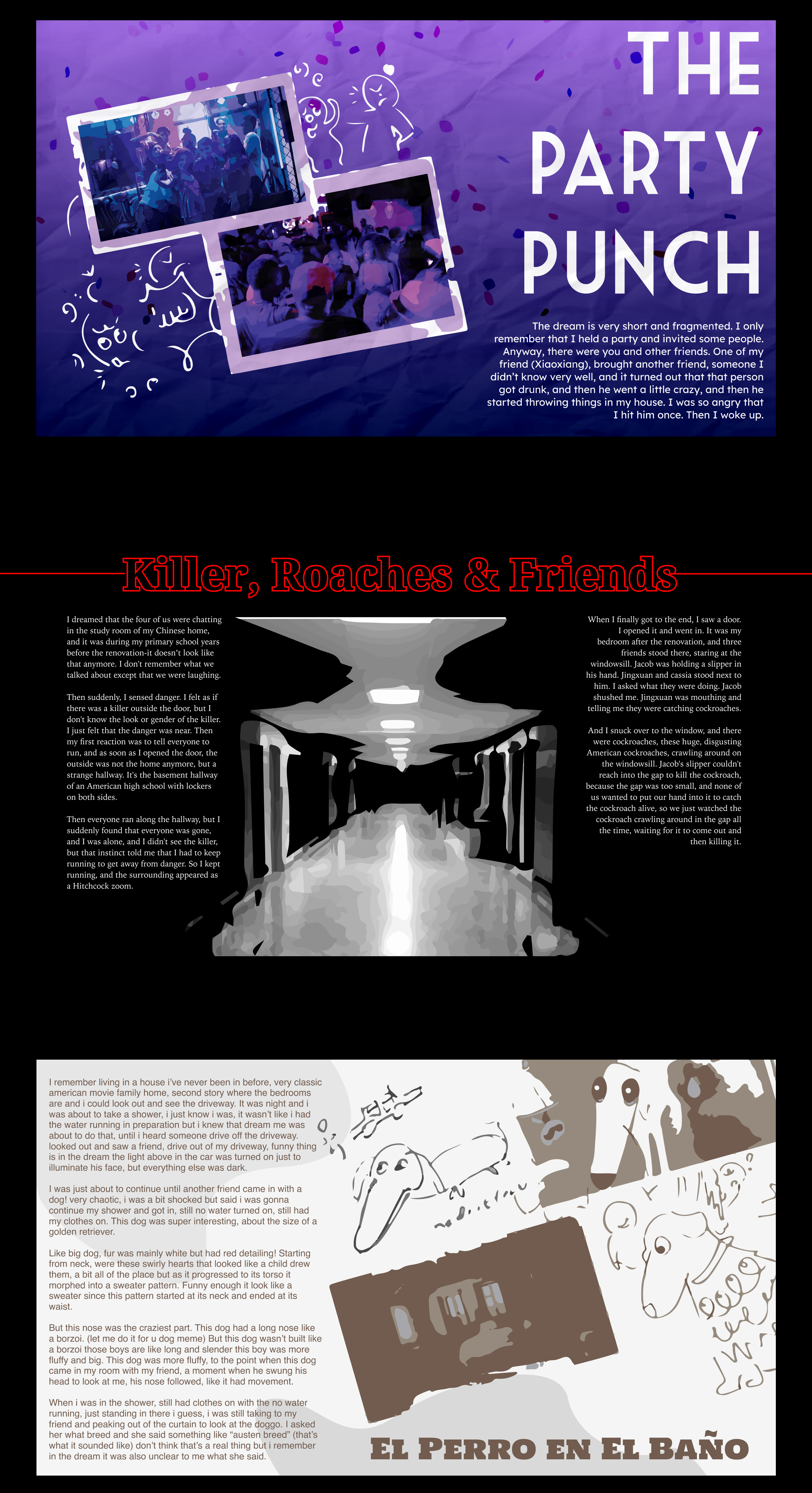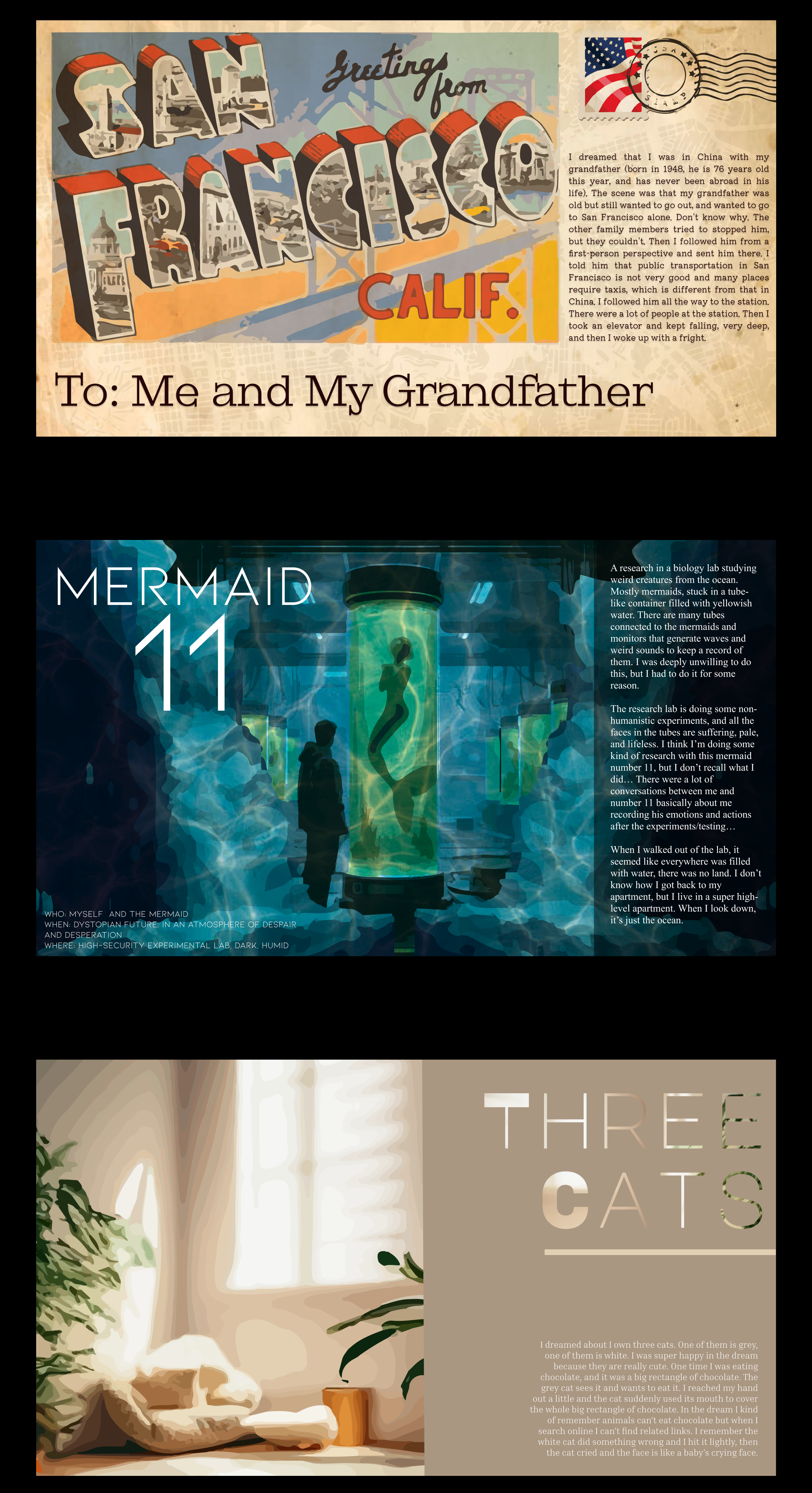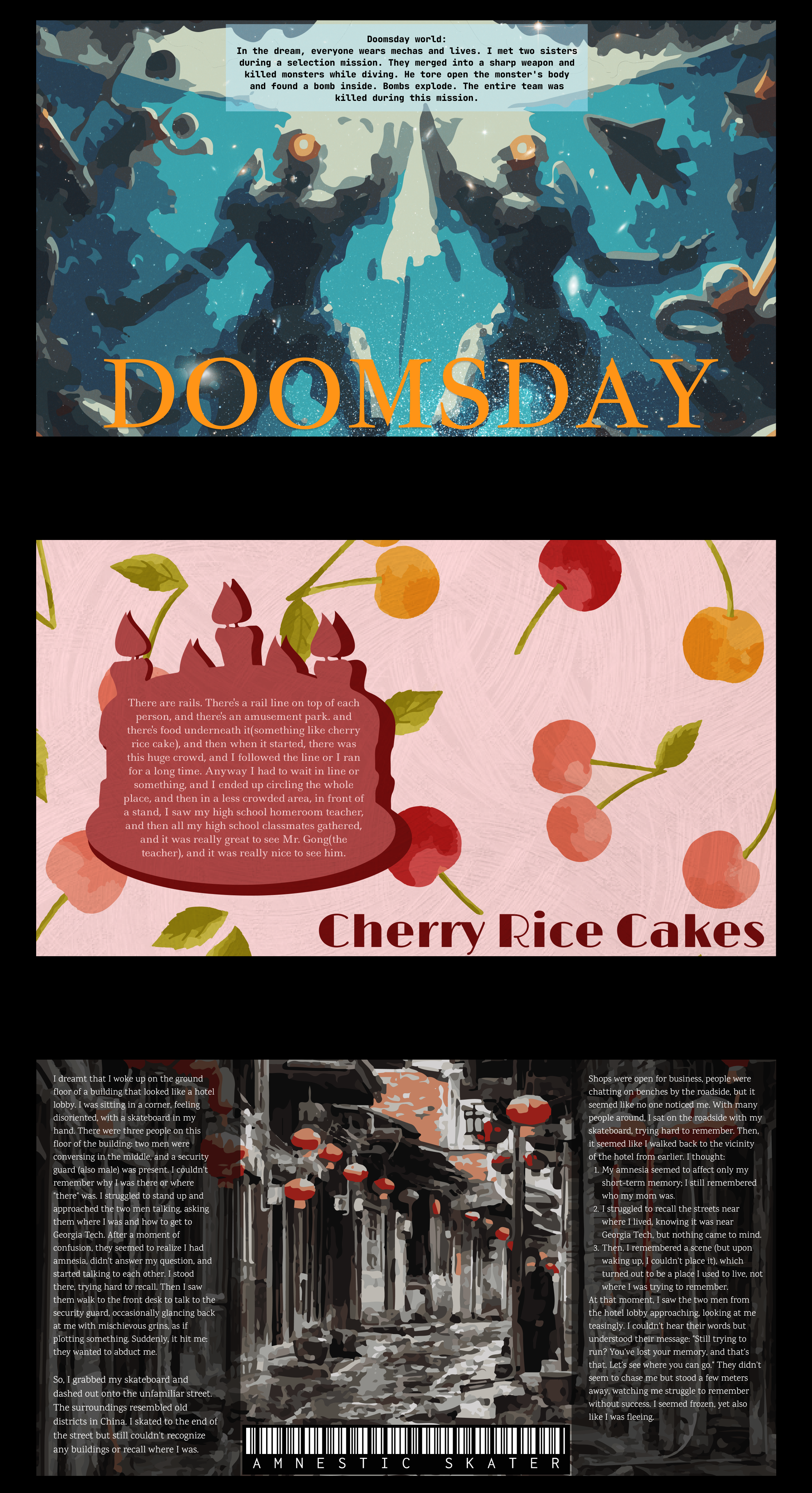A Workshop on
Dream, AI, & Distortion
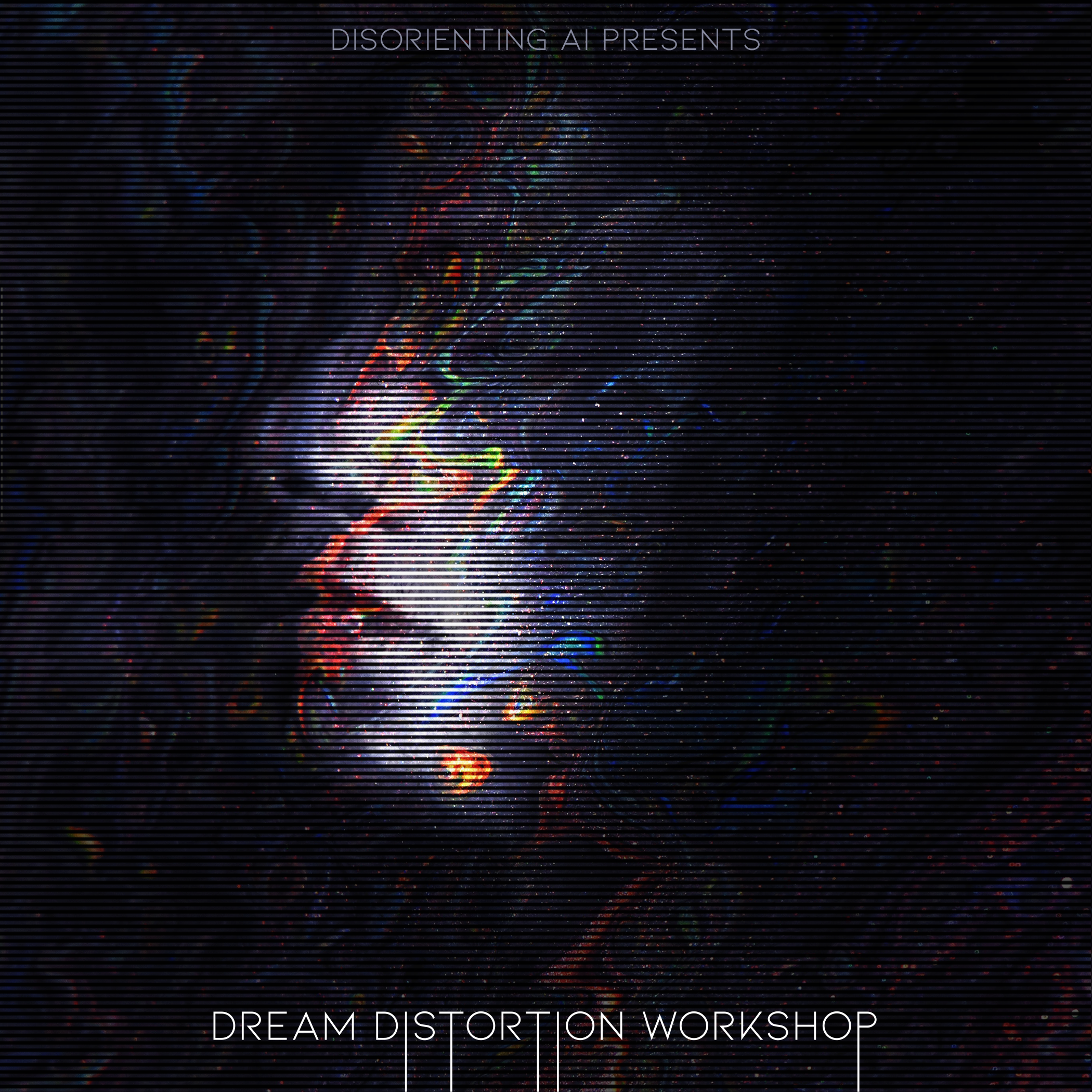
Ever thought of AI as a dream? The original random prompt or scene morphs seamlessly into the next content. The gaps between fragments of memory are filled in with potential rationales and narratives drawn from the tapestry of waking life. Sometimes, we appreciate the boundless creativity and uncanny allure of the generated result. Yet, there are moments when we are unsettled, confronted with unexpected glimpses into the depths of our unconsciousness.
This fascination led us to embark on four workshops with twelve participants to explore the differences between human and AI dream interpretations. Participants were asked to document their dreams for a week and submit one that they felt most comfortable sharing with strangers. In the first half of the workshop, three participants collaboratively read and annotated a single dream. This dream belonged to one of the three participants, and interpretations were provided both in the first person by the dream owner and in the third person by the other two participants. Following a brief discussion of each interpretation, participants were prompted to visually represent their interpretations using a combination of sketching and online images.

In the second half of the workshop, participants' text descriptions of their own dreams were used as prompts for AI to generate interpretations in both text and images, which were then compared by participants to their interpretations in the first half.

The last activity was a speculative design session, during which the participants reflected on their experience of the workshop and proposed alternative designs for various aspects of AI dream interpretation.

Through these workshop sessions, we delved into the disorienting experiences of interacting with AI. Some interesting themes emerged, and we would like to share our observations and thoughts in the articles below. As part of the documentation, we also created an anthology of all participants' dreams with graphics generated by AI and sketches/mood boards by participants in the "Analogy of Dreams" section. To explore in more depth, here is the link to the archive.
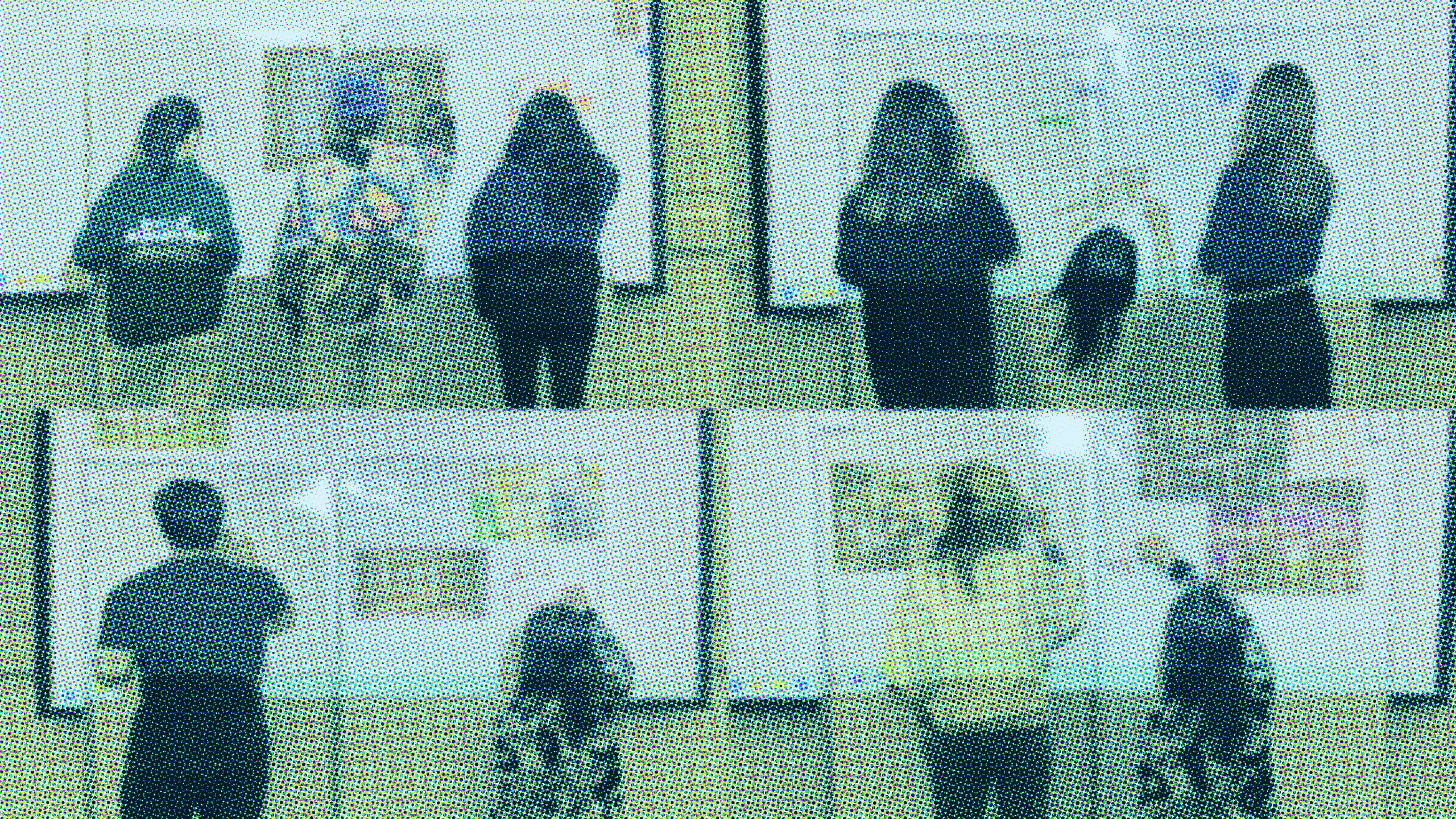
1.
Human Interpretation Misinterpretation
"Science is science"


The main difference between first-person dream interpretation and third-person dream interpretation is that the dreamers already have some pictures and mood about the dream in their mind, and when others interpret the dream, they are using their own experience to understand the context.
In most of the workshop sessions, when it comes to creating mood boards, there is always one participant that picture the dream completely different from that of the dream’s.
In the “Mermaid 11” dream, while the dreamer and one of the interpreters created mood boards based on the overall “dark and humid” environment, the other interpreter created the mood board to focus more on the research action with positive and lighter color scheme. When it comes to justification, the interpreter stated, “science is just science”.
In the “Skii Trip” dream, one of the interpreters pictured the dream’s mood as cyberpunk with neon light, while the dreamer commented that her dream is more realistic with the countryside mood: “I feel the thoughts about city lights are very different from my dream but is very interesting”.
One overall comment about human interpretation is “human interpretation is stronger than ai, everyone put in their personal experiences and perspectives into the dream, which ties everyone strongly to the dream”. But another comment stated “Perspective is a strength but also a shortcoming.”
It is no doubt that human have personal memories and experiences about many different things, and when it comes to dream interpretation, they can recall all of their memories and thoughts about the context and imagine their own world of that dream. And this is also where the shortcoming comes from: Human tend to be more subjective than AI. AI don’t have feelings, it generates the meanings of each symbol, and it only generates the meanings. No past experiences, no personal thoughts.
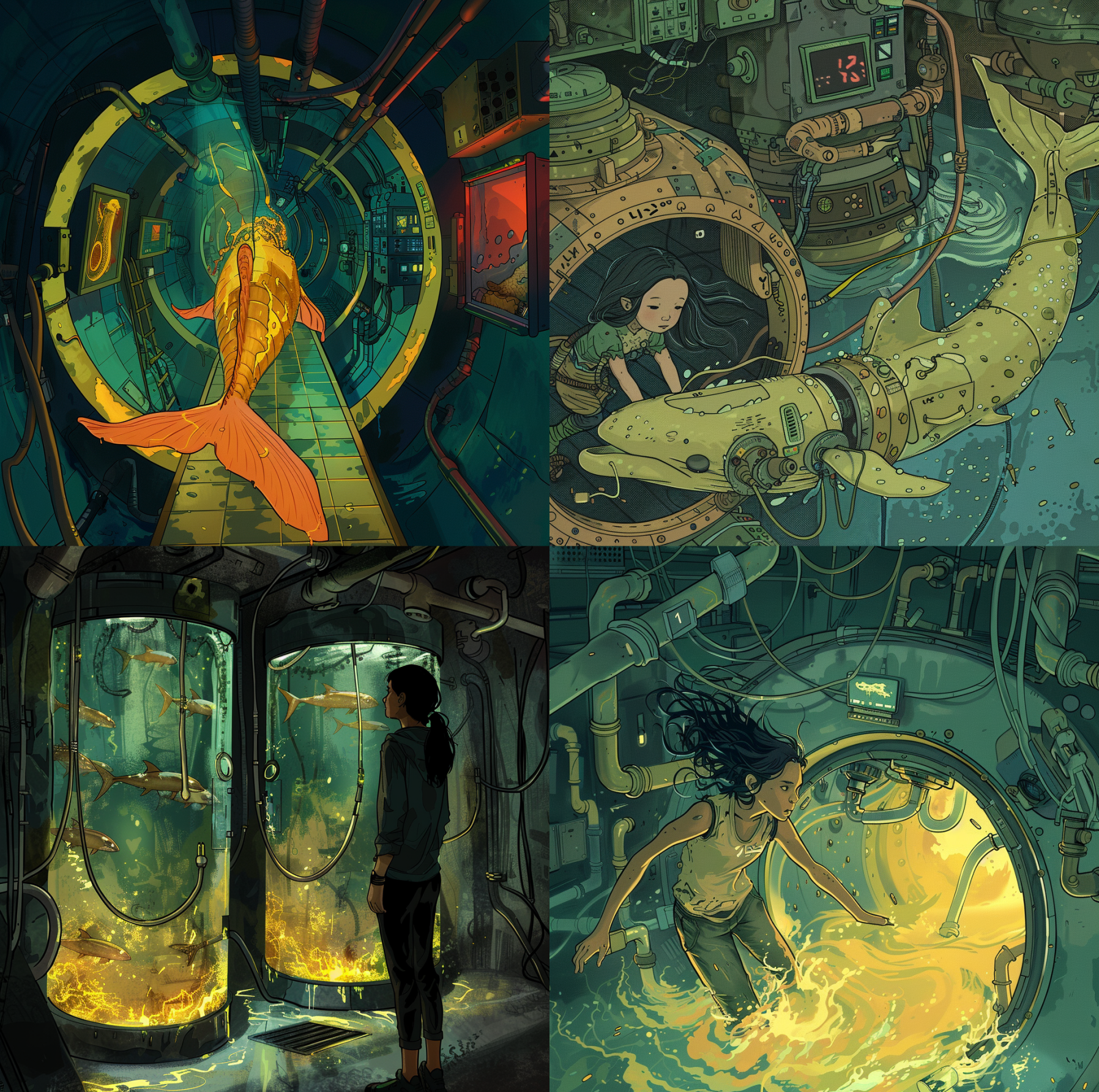

2.
Reflection V.S. Prediction
What to Expect from AI about Dreams
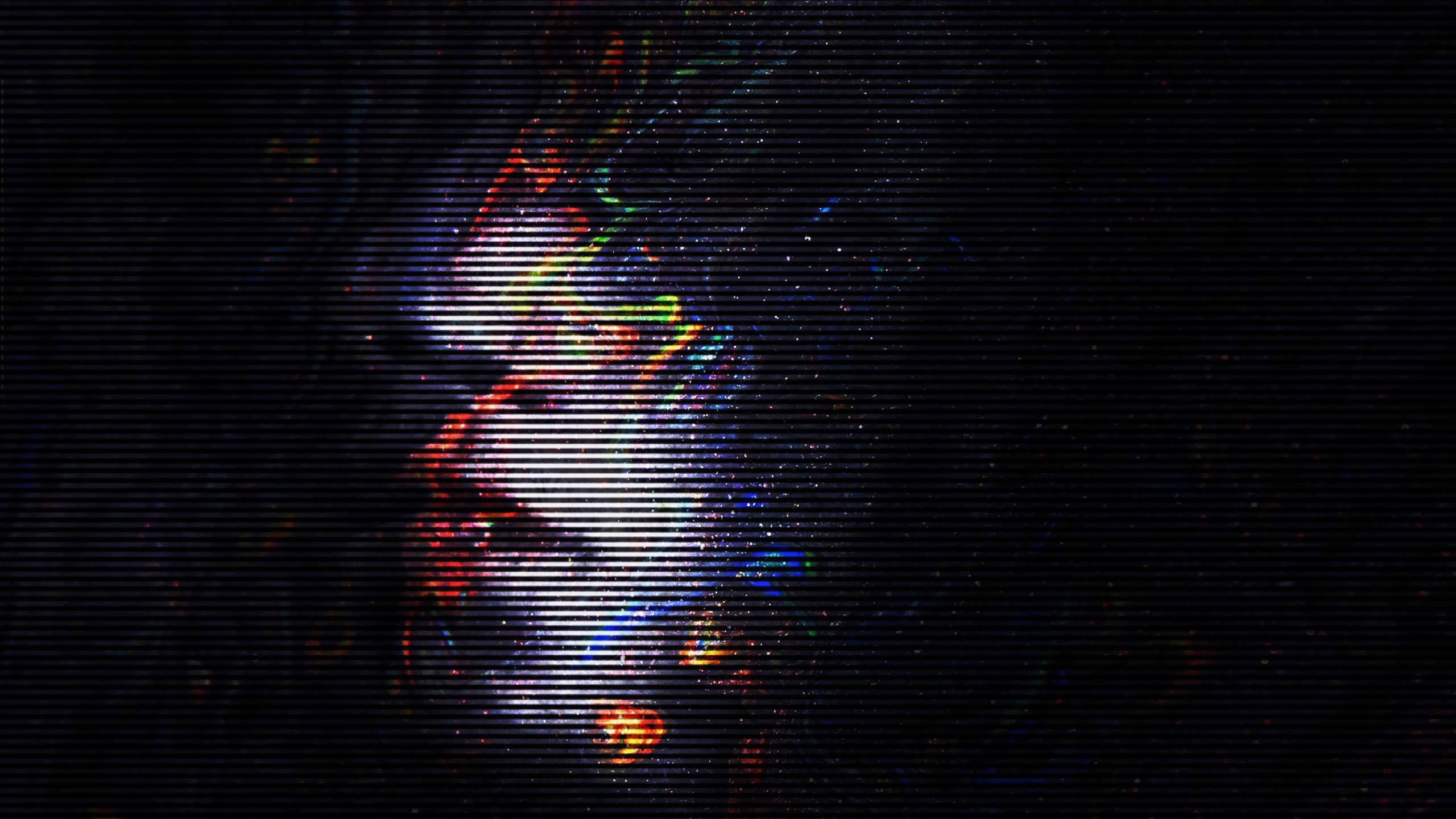

Throughout the workshop, we asked the participants: What do you expect to get from an AI dream interpretation? And everyone had their own expectations. Some wanted something fun; some sought explanations; some looked for insights; and some even anticipated predictions.
The most outstanding example of this is how Ben (pseudonym, dreamer of my grandfather and me) and Mary (pseudonym, dreamer of inside an app), both first-person interpreters from different workshop sessions, reacted differently to the symbol of pressure that AI analyzed from their dreams. Ben thought AI brought new perceptions of his real life whereas Mary didn’t take the interpretation too seriously.
We might attribute the various expectations to individual preferences. But we can’t overlook the fact that AI tends to provide negative symbolic meanings for people to reflect on, which could change their reliance on the interpretation. This was also reflected in people’s preferences for Copilot over Midjourney & DALL-E when it came to AI dream visualization. Copilot performed better in providing more context and even predictions, while the other two AI tools just visualized the basic scenes.
And that leads to another question: is it the negative connotations AI makes that influences people’s expectations and attitudes towards AI dream interpreters? In other words, would people be more receptive toward AI interpretations if they receive a more positive reflection about their real life?
Of course, there is no definitive answer. We all have our own expectations for the existing AI tools, and we also dream about more possibilities. During the end of each workshop, we had the participants sketch out their imaginations on future scenarios about AI and dream.
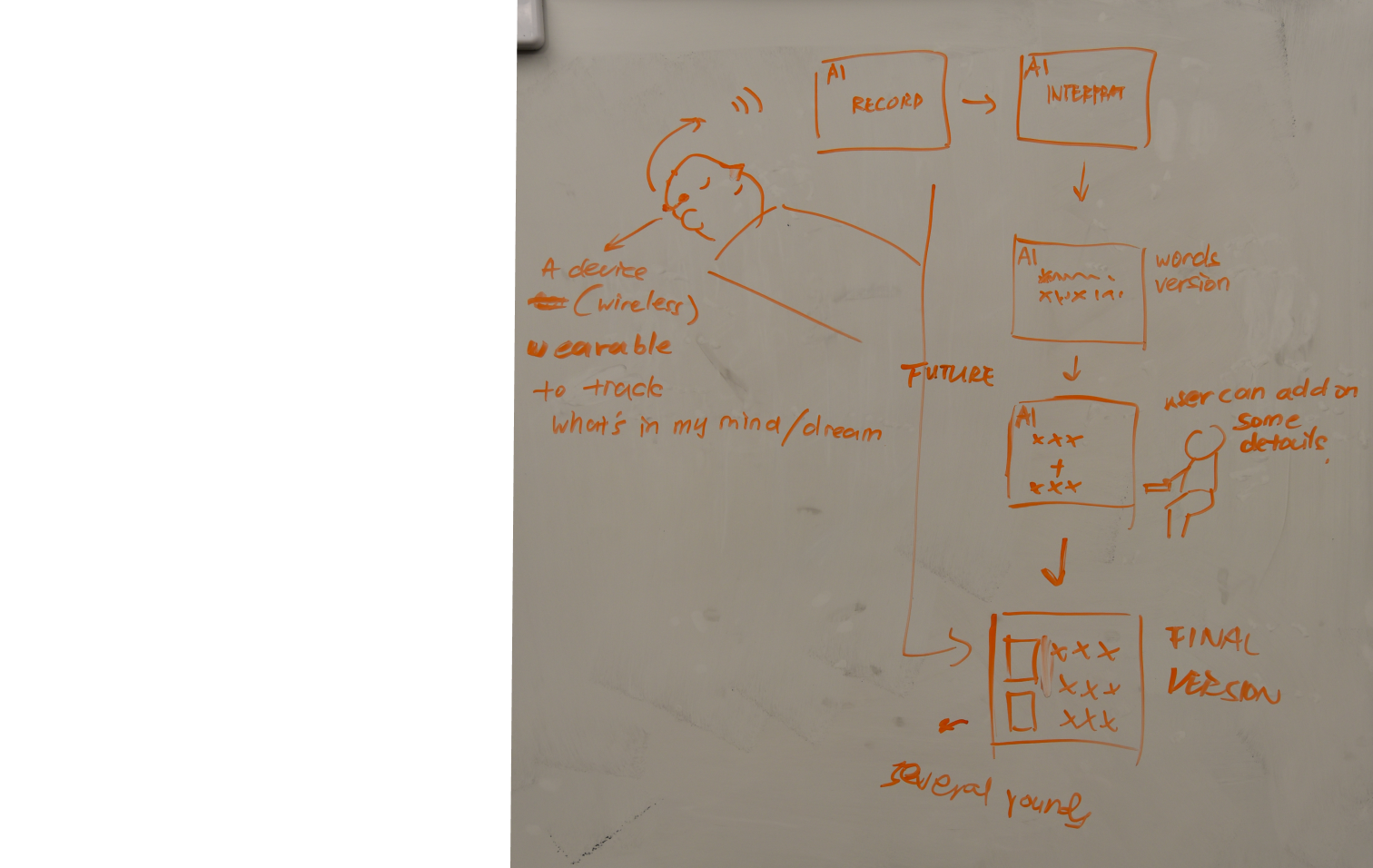
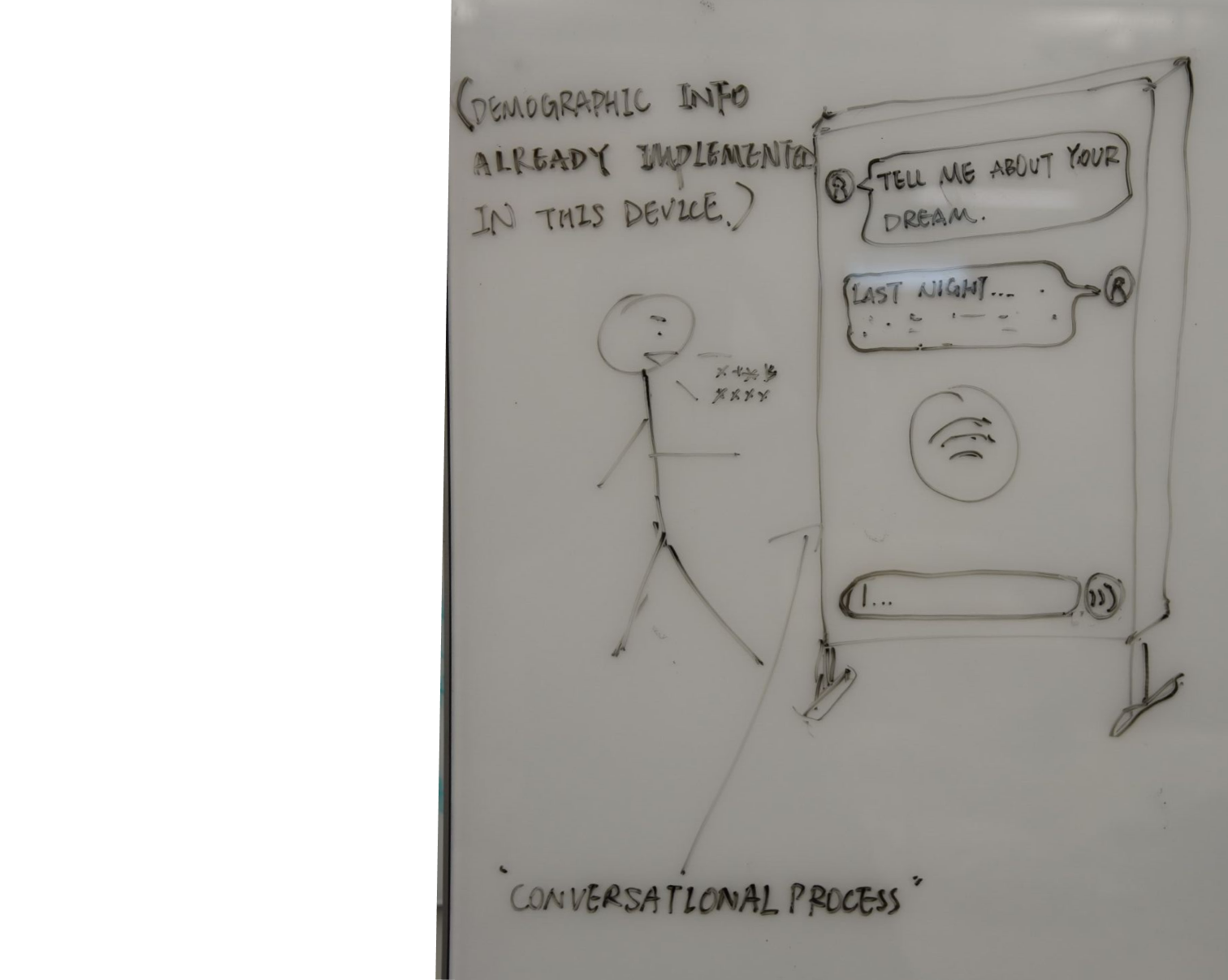
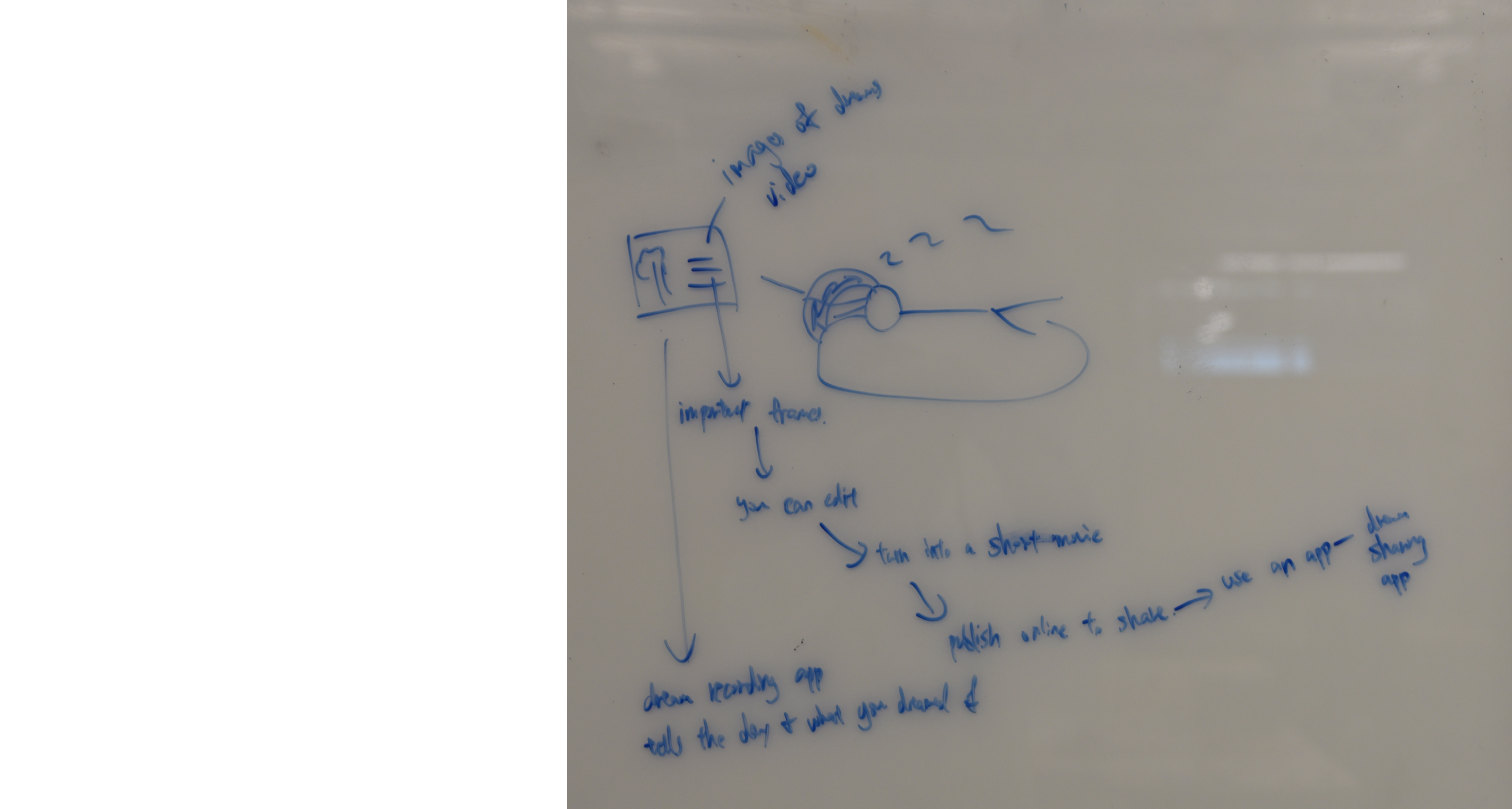
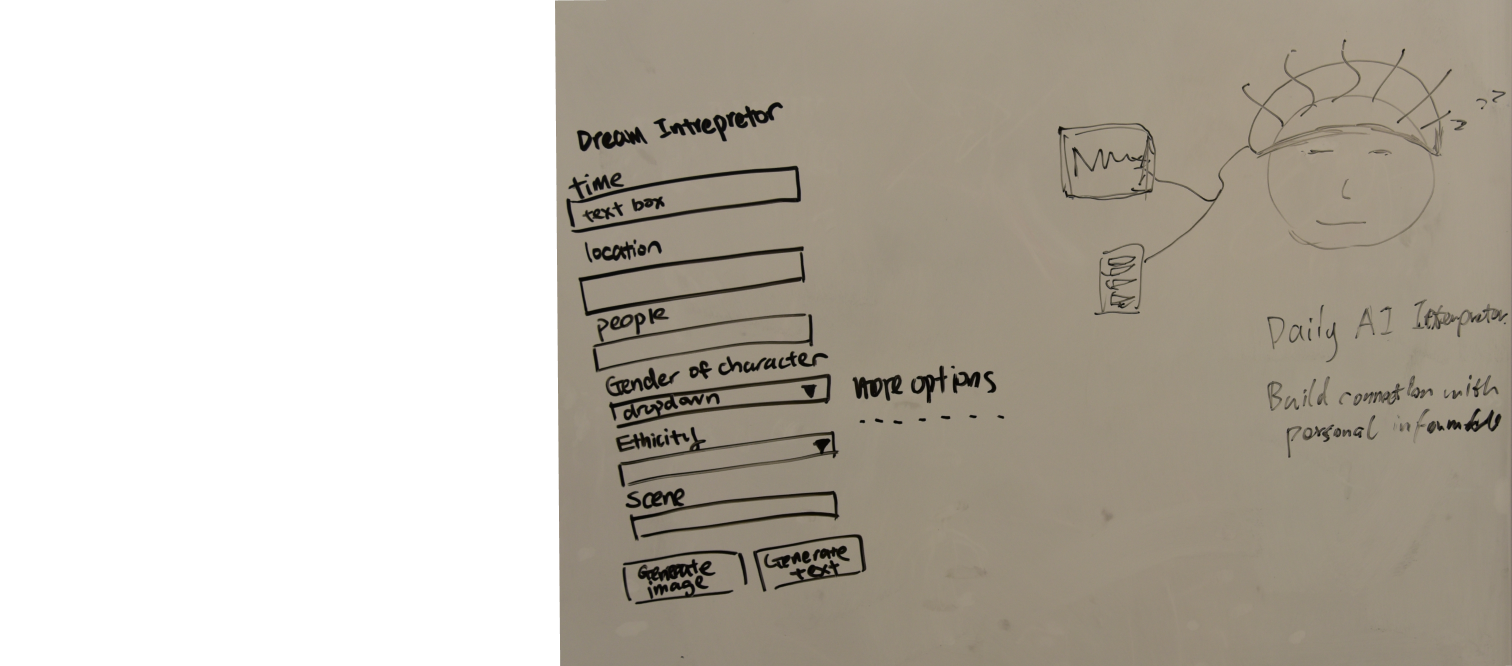

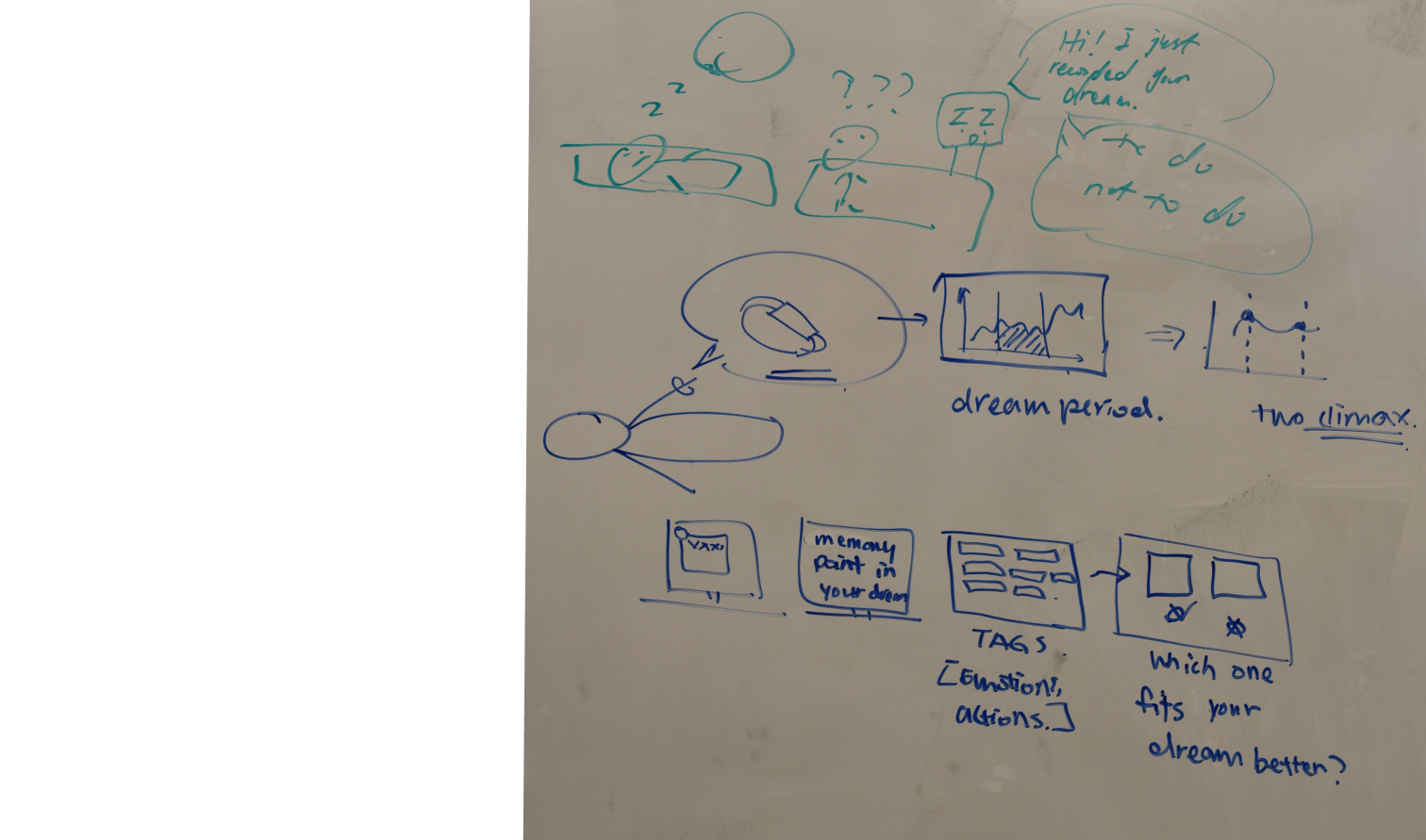
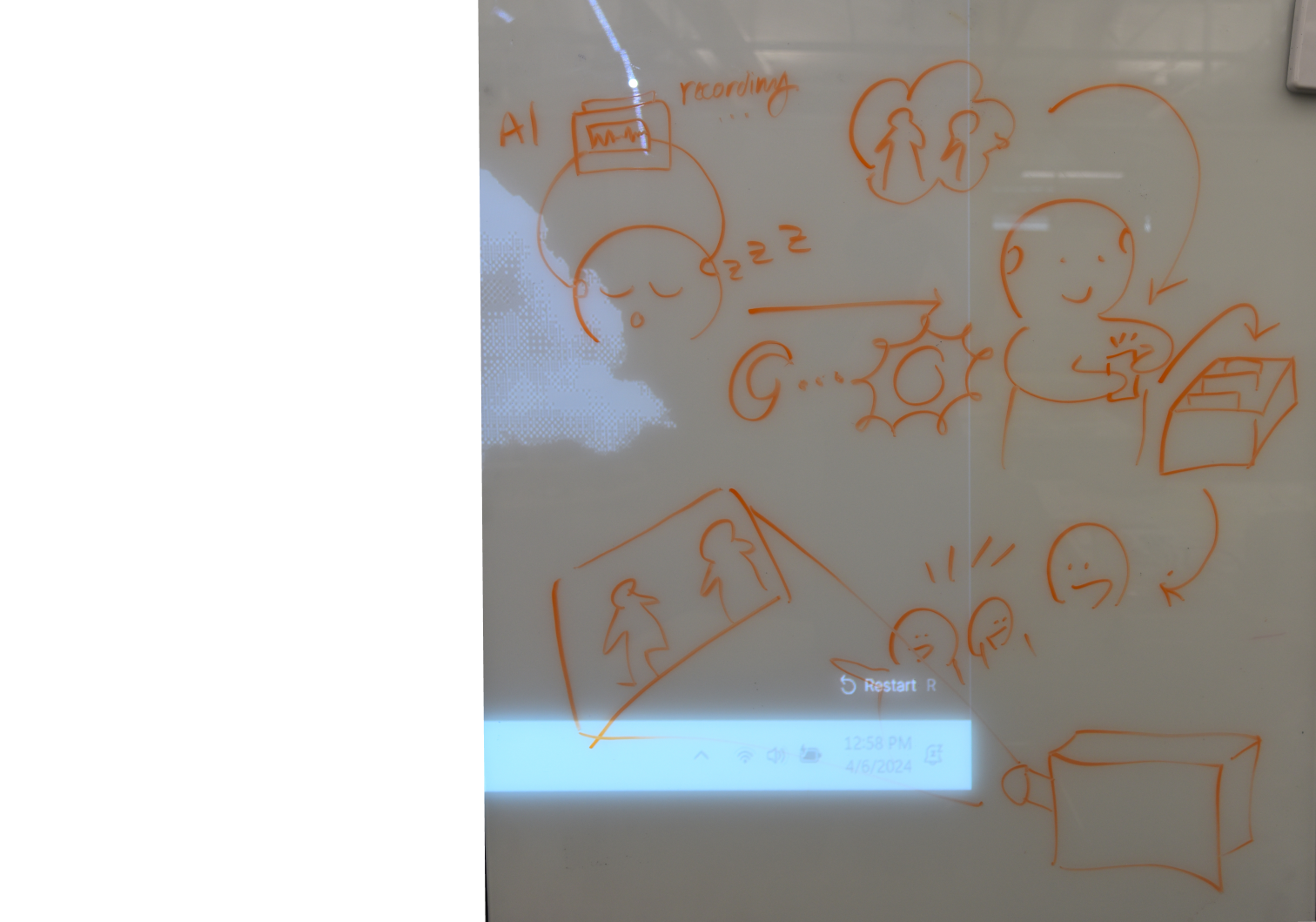
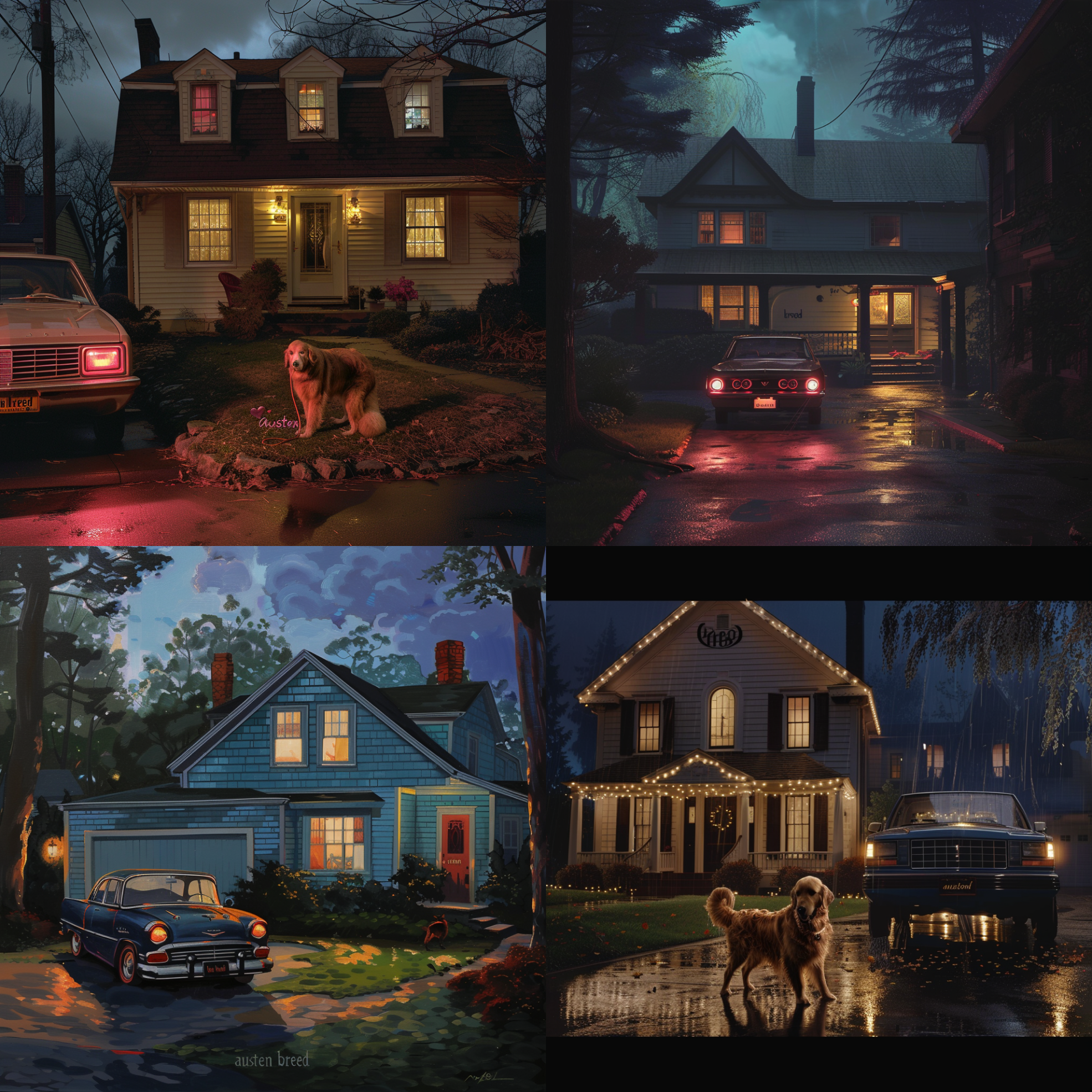
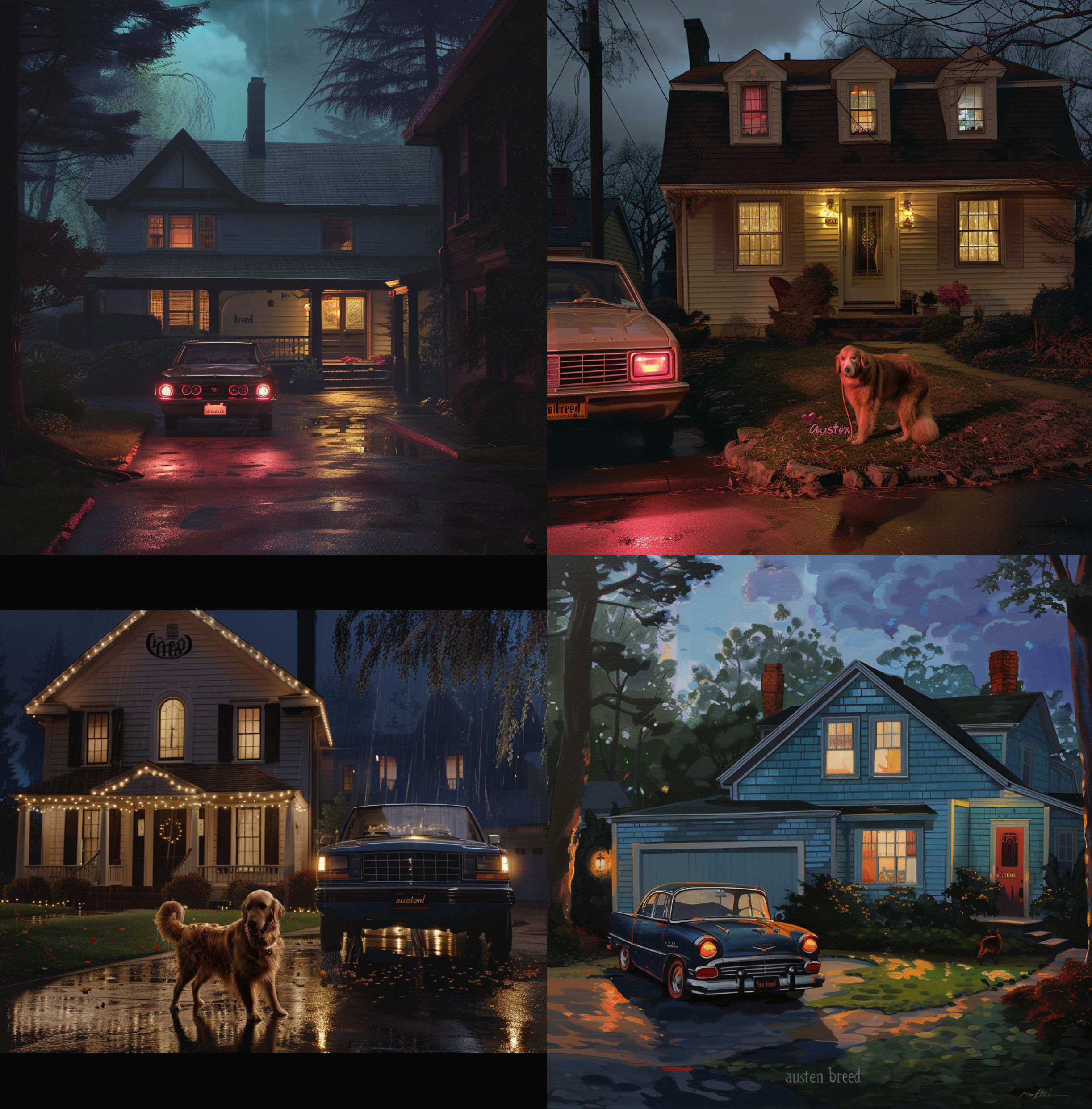
3.
AI Overinterprets


Most of the dreamers felt that the AI interpretation tend to overanalyze their dreams. At the same time, it seems to lack the human depth behind these interpretations. It doesn’t pick up nuances of humor and views every symbol in the dream as a reflection of the dreamer.
In a dream, there is a bathtub. The AI interpreter analyzes this as “The presence of a bathtub in the dream signifies a need for emotional cleansing and rejuvenation.” Yet in reality, it was just a bathtub in a dream.
At the same time, AI also brought up various points that the dreamers and other interpreters didn’t think of. AI is capable of introducing new perspectives that may or may not be accurate to the dreamer’s interpretation.
There seems to be a pattern to how AI interprets the dreams. They explain symbols in the dreams as struggles or emotions the dreamer may be feeling in real life. But it isn’t that deep! Having these explanations can ironically bring more stress to the dreamer because AI seems to be making the situation scarier than it actually is.
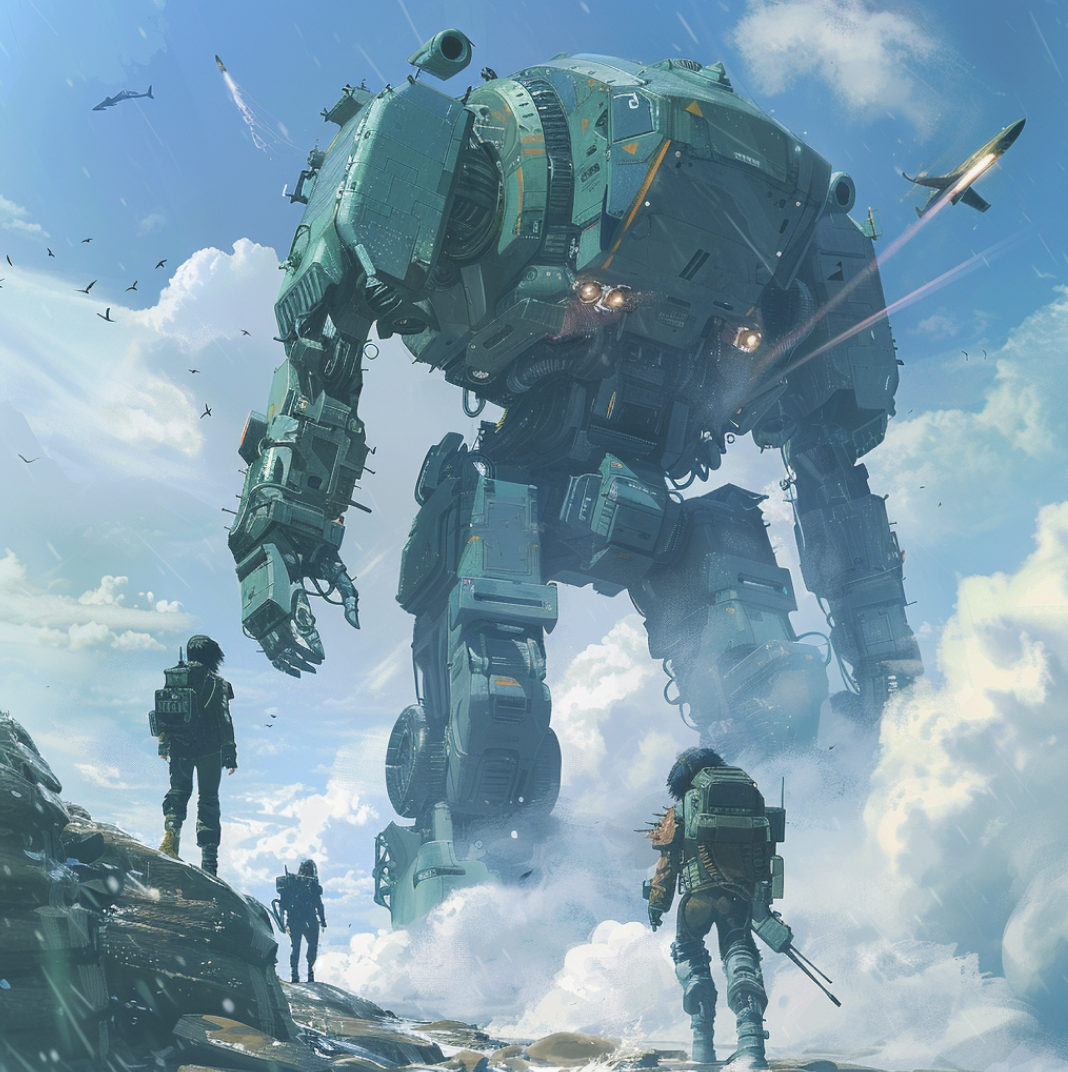
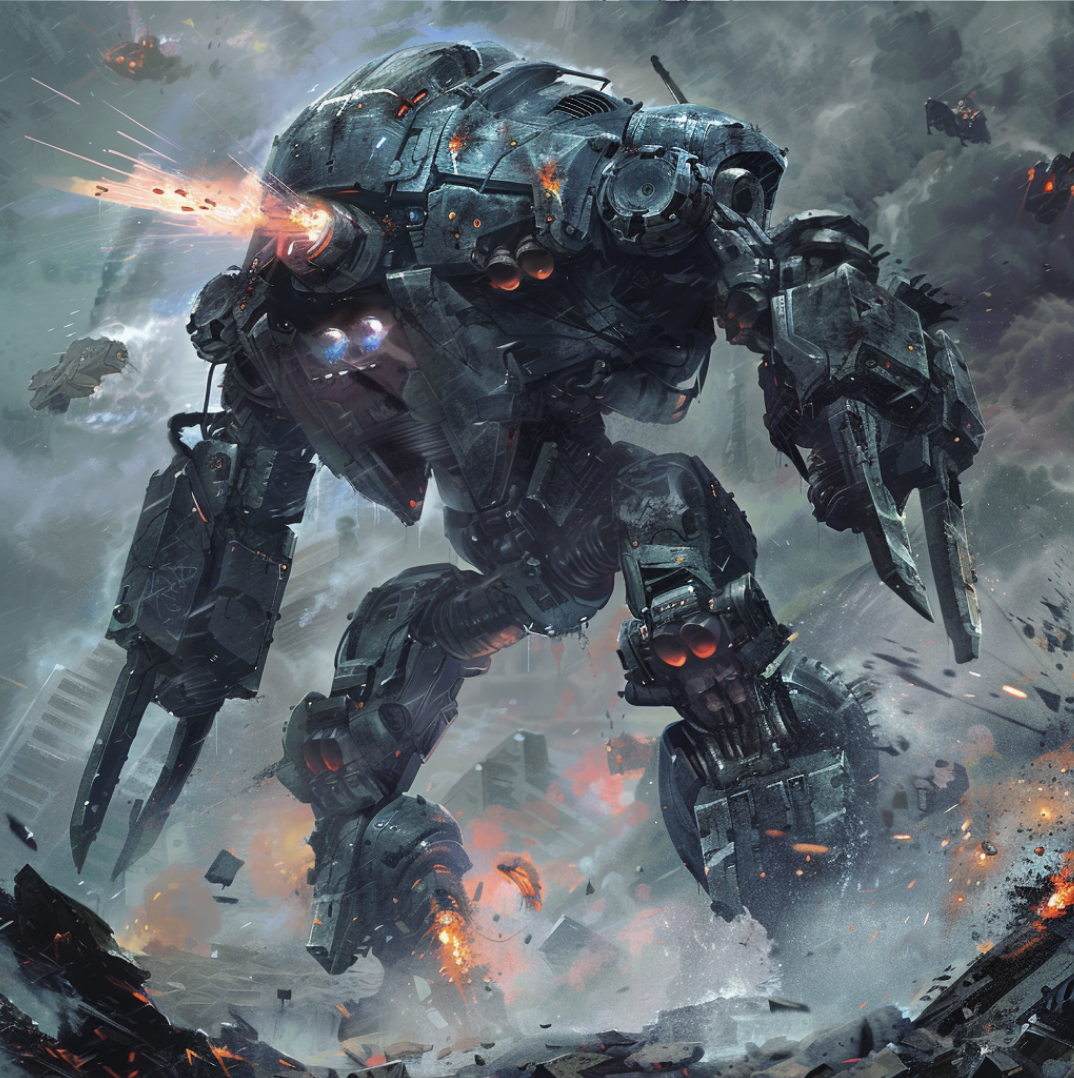
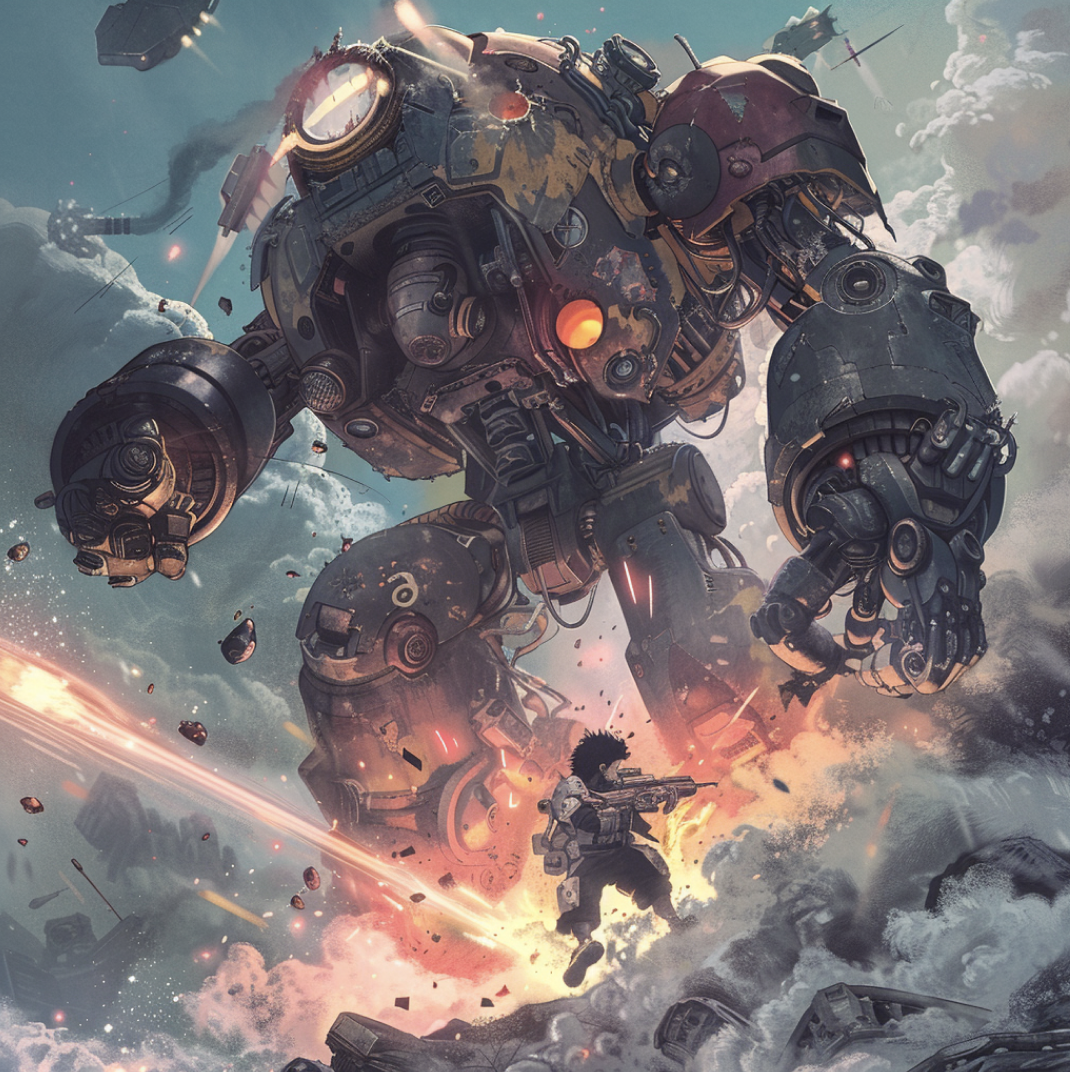
4
Cherry Rice Cake
Layers of Distortion of Dreams and AI


"Does anyone have a clue about what a cherry rice cake might be?" The dream interpretation was scheduled to take place during our workshop, yet it had to be addressed earlier during the preparation phase. Some of the dreams were originally submitted in Chinese but translated into English to ensure everyone understood. In this instance, no one on the team had the foggiest idea about a cherry rice cake.
Naturally, we brainstormed our best guesses. Considering the dreamer's Chinese background, with four out of five team members sharing similar roots, we felt somewhat confident in deciphering this enigma. One suggestion surfaced: perhaps it's like those popular rice crackers in China, but with a cherry twist. Given the scarcity of genuine cherry-flavored products in China, others speculated it might involve cherries atop the usual rice crackers. On the other hand, rice cake is also another way of saying mochi. Could it be cherry-flavored mochi?
So we decided to check the original Chinese text before the English translation, only to find ourselves deeper in the maze. The original words read “樱桃大米饼.” While “樱桃” undeniably means cherry, “大米饼” could either refer to the popular rice crackers or rice pancakes. Though no one had ever seen cherries atop rice pancakes, reminiscent of American berries on pancakes, it was still a plausible scenario. Dreams, after all, play by their own rules. We didn’t bother to contact the owner of the dream. “They are gonna figure it out at the workshop.”
Well, we were all barking up the wrong tree. The truth was told: a missing punctuation mark altered everything. It was meant to be “樱桃,大米饼” – cherries and rice crackers. AI found itself entangled in the confusion, too. The two Midjourney images overlooked the cherry rice cake entirely. DALL-E, however, managed not to miss this detail, but with one image depicting cherries floating above vendor booths and another showing a bowl of pink mochi, perhaps coincided with our misinterpretation of cherry-flavored mochi. As for Copilot, only one out of four images captured the cherry rice cake, or should I say a gigantic bowl of massive grains of rice with watermelon-sized cherries on top.
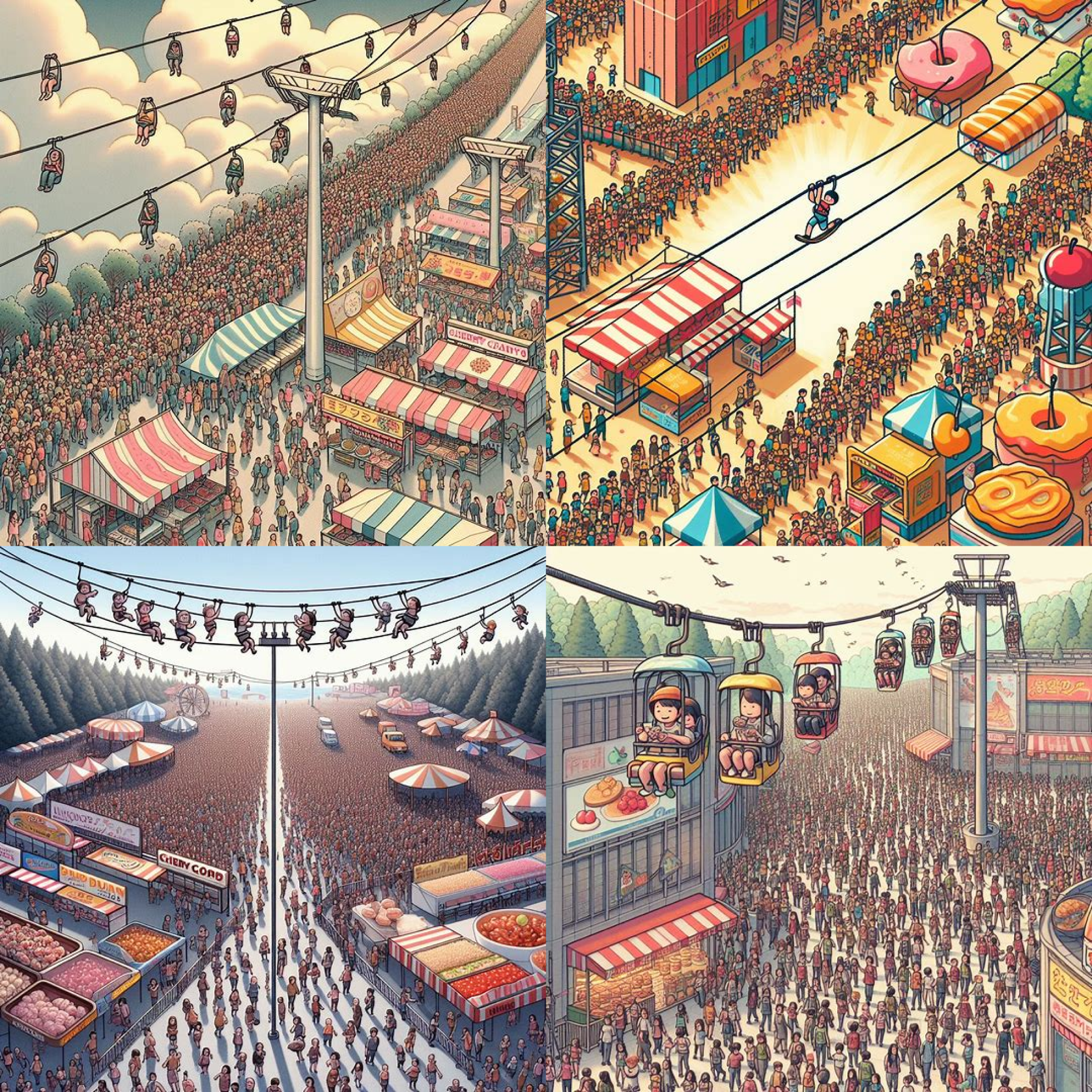
5
Chinese streets in dreams: How does AI map our cultural memory?


“When comparing the images of streets in capital cities, some differences jump out. Jakarta often featured modern skyscrapers in the background and almost all images for Beijing included red paper lanterns. Images of New Delhi commonly showed visible air pollution and trash in the streets. One New Delhi image appeared to show a riot scene, with lots of men milling around, and fire and smoke in the street.”--Victoria Turk
In the workshop, we used AI tools such as DALL-E, Mid Journey and Copilot to visualize participants’ dreams. In one of the participants’ dreams, “Amnestic Skater” described “Chinese streets” but did not specify the architecture. style. What is surprising, however, is that the AI-generated images all show traditional Chinese architectural styles, such as Forbidden City-like palace structures that clearly belong to the past rather than modern times.
This experience made me think deeply. Although the architectural style was not specifically specified in the dream, the AI's output invariably selected those typical and historic buildings as representatives. This phenomenon made me think about how AI relies on mainstream images in its training data to fill in information gaps when dealing with ambiguous cultural keywords.
To explore this, we tried more explicit prompts, such as "modern Shanghai streets" or "modern Beijing streets." The results showed that although the "modern" modifier did guide the AI to show some modern buildings, the images were still mixed with traditional buildings or old street scenes from the 1980s and 1990s. This shows that even under specific instructions, AI-generated visual content still tends to return to more "iconic" and widely recognized images.
Through this experience, we realized the need for more thought and choice when using AI tools. The output of AI is not just a display of technology, but more of a mirror of the data sets it relies on. How these data sets are created and filtered inevitably affects the visual and cultural output of AI, which in turn affects our understanding of our own culture and its expression.
This bias in relying on traditional and outdated images is not only limited to the limitations of cultural displays, it can also mislead those unfamiliar with China. If a person who doesn't know much about China sees these generated images, he might think that China is still a country full of ancient architecture and traditional lifestyles. This misleading visual information may deepen their impression of China as a country with a long history but not modernization.
Such misunderstandings not only affect the correct understanding of culture, but may also cause unnecessary prejudice and judgment in the international community. Therefore, our choices and judgments when using AI technology not only affect the development of the technology itself, but also touch on the broader issue of how to fairly and truly represent and spread culture.
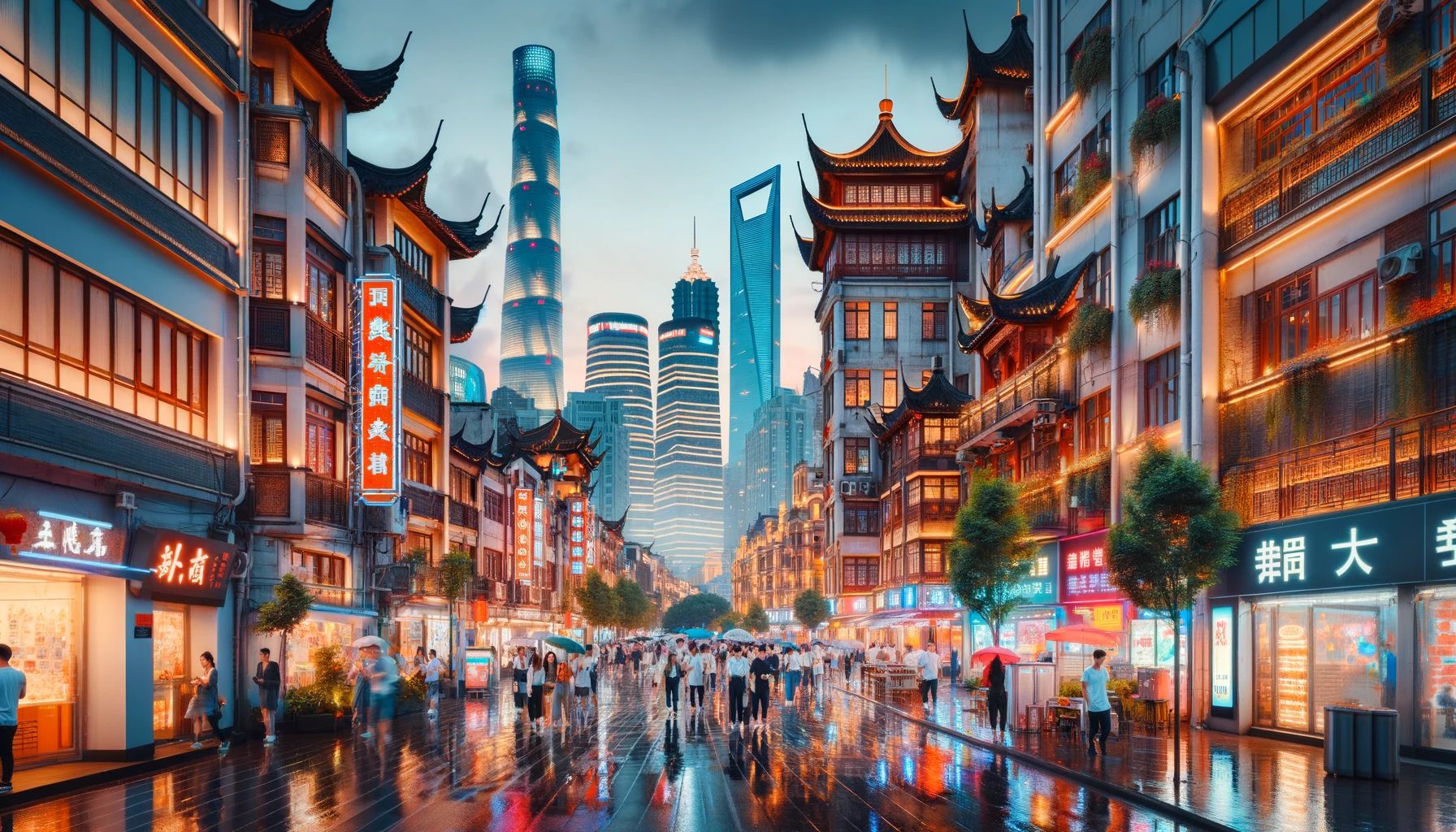
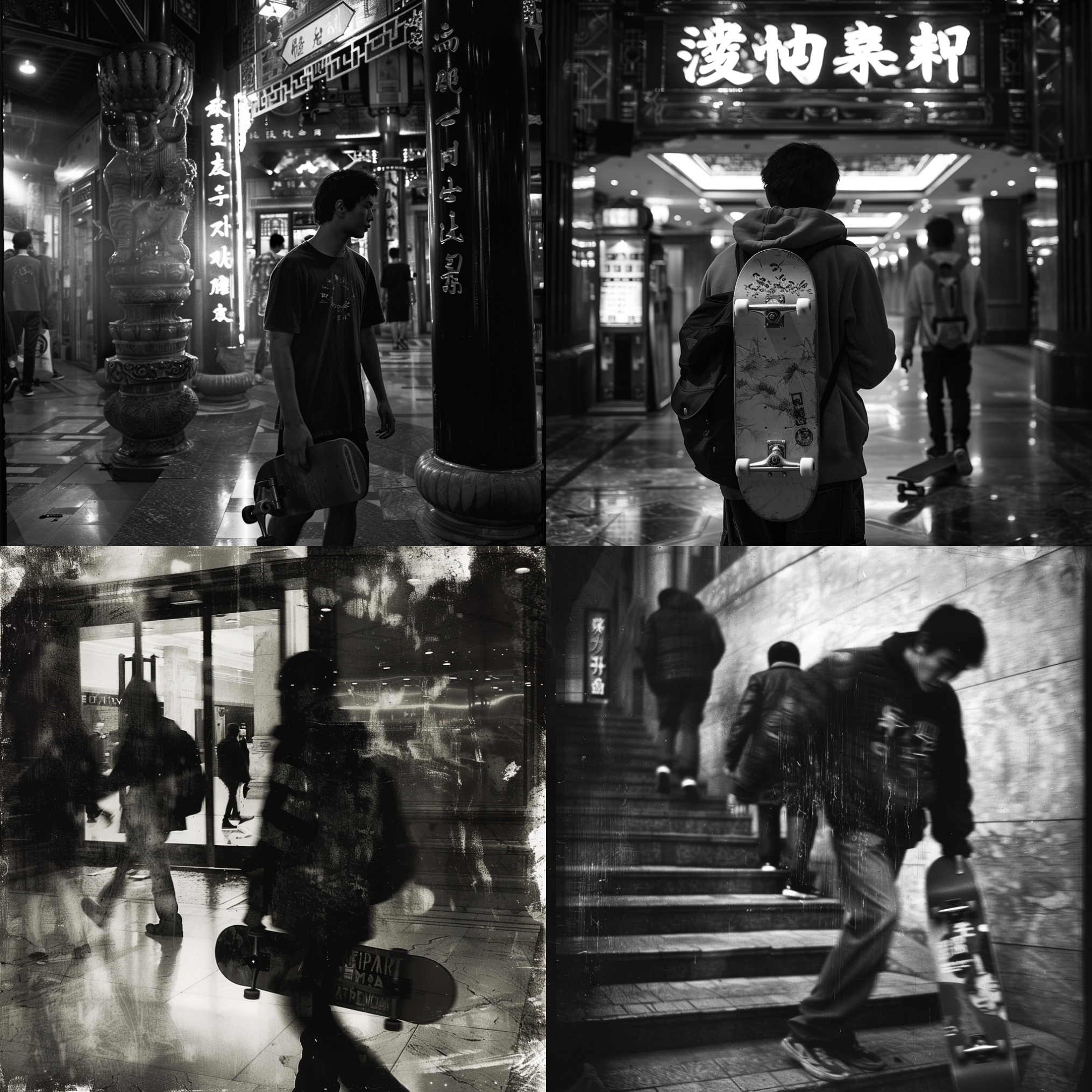
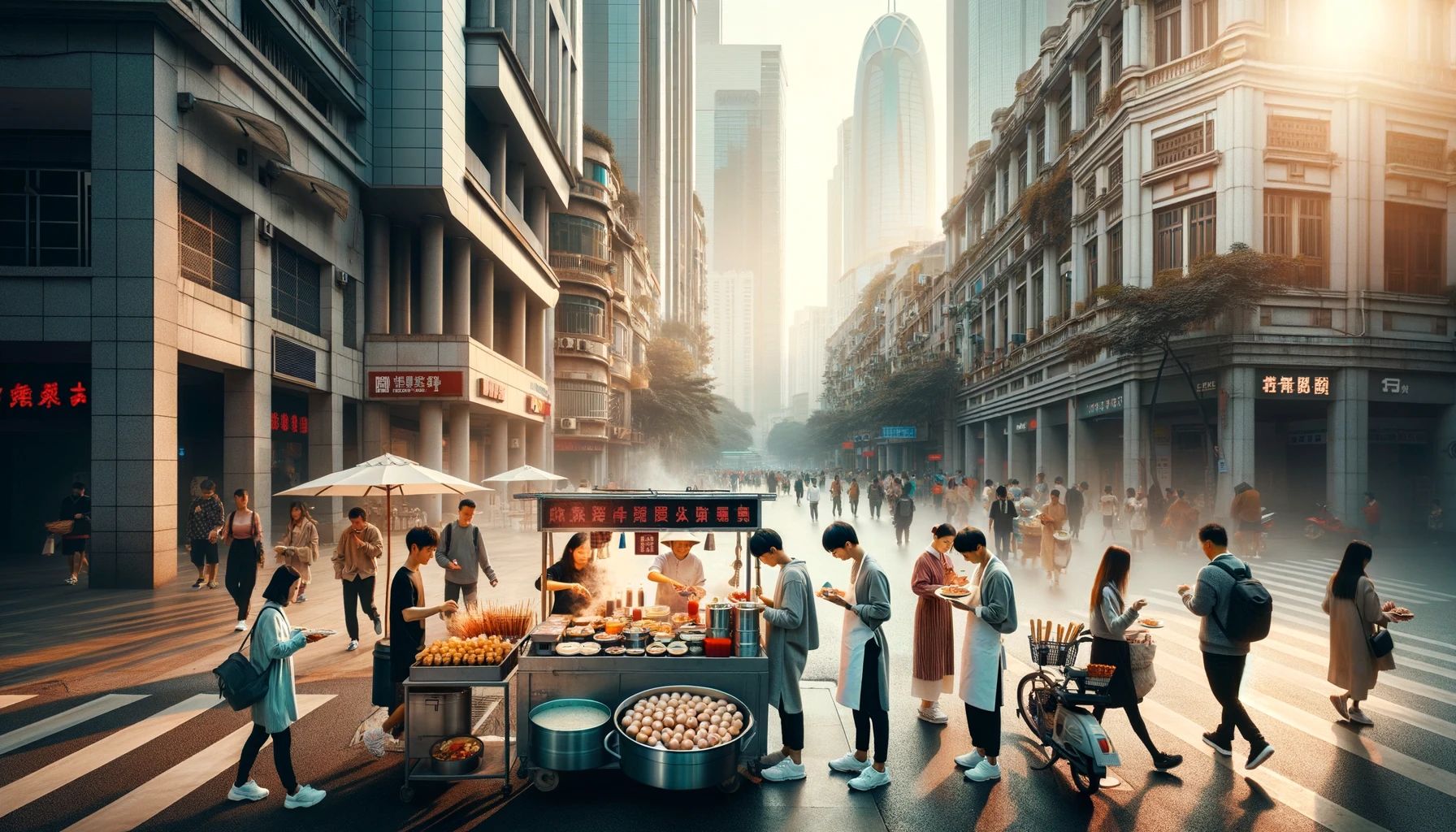
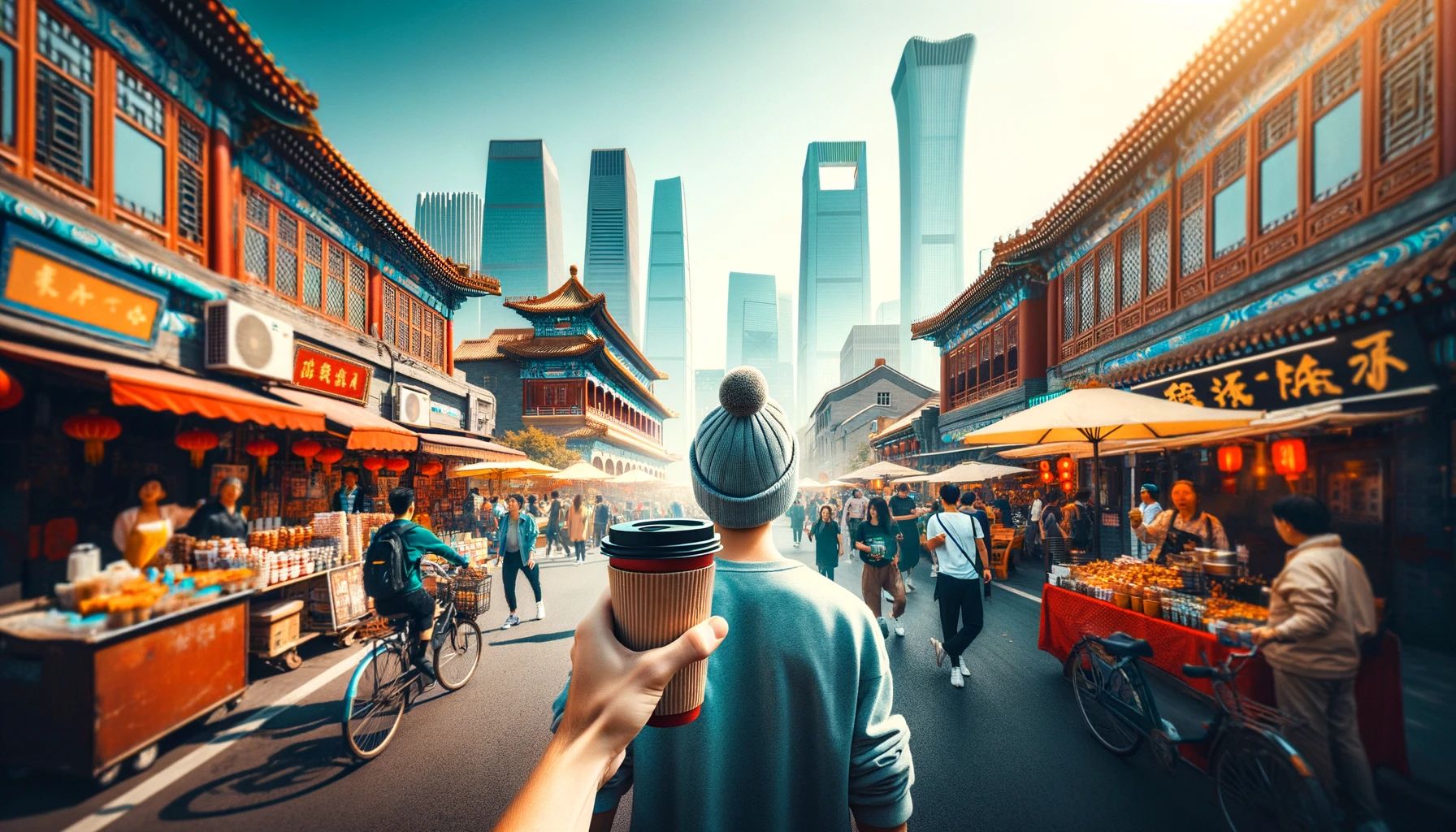
Conclusion
It's intriguing to note the striking similarities between dreams and AI. Both are products of neural networks, whether biological or artificial. They share a common trait of operating as black boxes, revealing only inputs and outputs while concealing the processes. Additionally, both can exhibit remarkable creativity or evoke disturbing imagery.
However, a crucial distinction arises when considering the subjective nature of human dreams compared to the perceived objectivity of AI. Human dreams are deeply intertwined with personal emotions and beliefs, whereas AI interprets symbols in dreams based on meanings stored in its database. Such distinction becomes problematic when cultural context is involved, as demonstrated by instances like the misinterpretation of "Chinese streets". Like humans, AI cannot exist in a vacuum or attain a completely neutral, objective standpoint.
Despite the rationalization and optimization of various aspects of human life, dreams remain an untouched realm, akin to a supernatural myth that modern humans are comfortable with. In contrast, AI is continually evolving and subject to scrutiny. This makes us wonder whether us humans will harness AI to decode and utilize dreams as productive tools or if we will casually chat about AI without the eager to solve, like how we are with dreams today.

Each of the dreams' graphic is designed by the designers in the team. Designers set the theme of each graphic based on each dreamer's mood and interpretation for their dream in the workshop. Some graphics used AI generated images for the dream, some used participants' sketches for the dream, and some used both of them.

